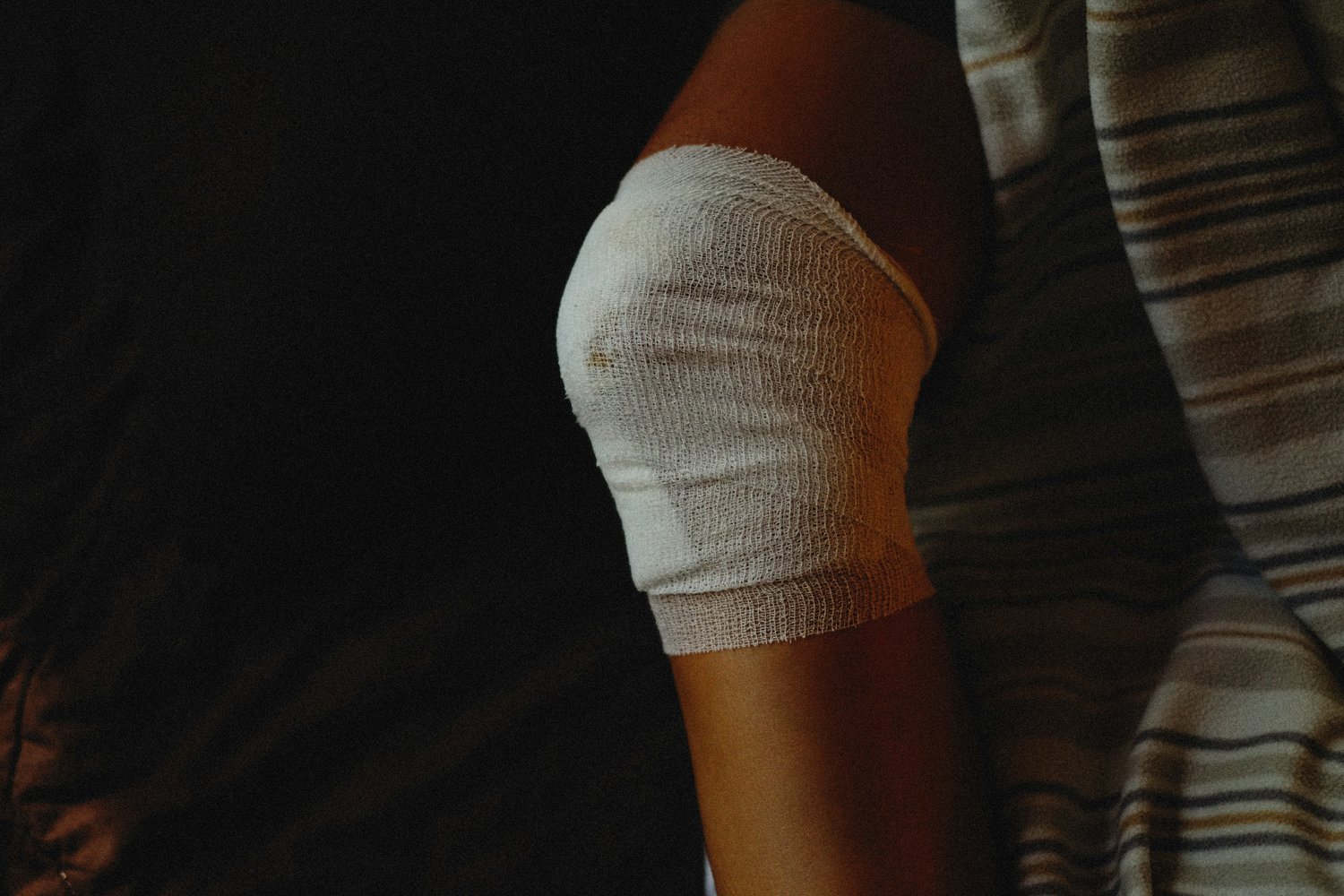Image: https://unsplash.com/photos/a-person-wearing-a-striped-shirt-Ea9npW5Q_GA
Knowing the evidence needed for an Ikerd Law Firm – personal injury lawyer in Lafayette simplifies the process. Key evidence includes medical records, accident reports, eyewitness statements, and photos of the scene or injuries. This documentation is essential for proving liability and supporting your compensation claim, helping attorneys represent you effectively by clarifying the incident to meet legal standards.
Common Personal Injury Cases
Car accidents, slips and falls, workplace accidents, and medical malpractice are common examples of personal injury claims.
Typical Injuries from Accidents
Injuries sustained in personal injury cases can range from minor cuts and bruises to life-changing conditions. Some common injuries include:
Broken Bones
Whiplash
Traumatic Brain Injuries (TBI)
Spinal Cord Injuries
Burns and Lacerations
These injuries often require extensive medical treatment, and the evidence must reflect the costs, recovery time, and impact on daily life.
Importance of Seeking Medical Attention
After an accident, it is essential to seek medical attention as soon as possible. Prompt medical treatment can identify serious injuries and prevent complications. Continuing treatment also establishes valuable medical records for personal injury claims.
For example, failing to address a concussion can delay recovery and increase the need for compensation. Keeping track of treatments and diagnoses is critical to recovery and assisting in claims.
Legal Basis for Personal Injury Claims
To build a strong personal injury case, it is essential to understand the legal foundation behind such claims. These claims are founded on established principles that determine whether a party is liable for harm caused by their actions or lack of action.
Here is a summary of the key principles.
Duty of Care
The duty of care is the legal obligation to protect others from harm. In any personal injury case, establishing the duty of care is the first step. It happens when one does not provide the standard of care.
Breach of Duty
A breach of duty occurs when the defendant fails to meet the standard of care required by law. A breach may be intentional, or it can be reckless or merely a failure to act. A breach of duty is what any personal injury claim is founded on.
Causation in Injury Claims
Causation establishes the direct link between the defendant’s actions (or lack thereof) and the harm that occurred. A claim can only succeed if there is sufficient evidence to establish a clear causal connection between the breach of duty and the injury.
Damages in Claims
Damages can be categorized into two types: economic and non-economic. Economic damages include medical costs, lost wages, and other financial losses, while non-economic damages encompass pain, suffering, and emotional distress.
Evidence Needed to Prove Liability
To successfully prove a personal injury claim, your attorney must show that the other party is liable for your injuries. There are several types of evidence needed to establish liability:
1. Eyewitness Testimonies
Eyewitnesses who saw the accident occur can provide firsthand accounts of what happened.
2. Police Reports
In cases of car accidents, slips and falls, or other incidents that involve law enforcement, a police report is a critical piece of evidence. This report may include statements from the involved parties, witnesses, and officers, helping to establish the cause of the accident.
3. Photographic Evidence
Photos of the scene, the injuries, and any hazardous conditions (e.g., wet floors, potholes, or broken equipment) can provide strong evidence of negligence or unsafe conditions.
4. Medical Records
Medical bills, doctor’s notes, and test results all serve to establish the link between the accident and your injuries.
5. Expert Testimony
In more complex cases, expert witnesses may be needed to explain the technical aspects of the injury or accident. For example, in cases involving medical malpractice or severe brain injuries, medical experts can testify about the causation and long-term effects of the injuries.
6. Surveillance Footage
In slip-and-fall or car accident cases, surveillance footage from nearby security cameras can be crucial.
7. Records of Lost Wages and Impact on Daily Life
Keep track of missed workdays, reduced earning capacity, and how the injury affects your daily tasks. Documentation from your employer and personal records can be used as evidence of these losses.
8. Product Defects and Manufacturer’s Documentation
In cases involving defective products, such as faulty machinery or dangerous drugs, evidence from the manufacturer, design flaws, or product recalls can help show that a defect caused your injury. Product warranties and safety reports may also serve as useful evidence.
Present a Compelling Case with Strong Evidence Today!
Successfully pursuing a personal injury claim in Lafayette requires thorough preparation and evidence gathering. By carefully documenting your injury and working with legal professionals, you can increase your chances of a successful outcome in your personal injury claim.
If you have been injured in Lafayette and are unsure of the next steps, reach out to a trusted personal injury attorney today to understand the types of evidence you need and how to present it effectively in your claim!
Ikerd Law Firm
600 Jefferson St Suite 903, Lafayette, LA 70501
+13373668994



